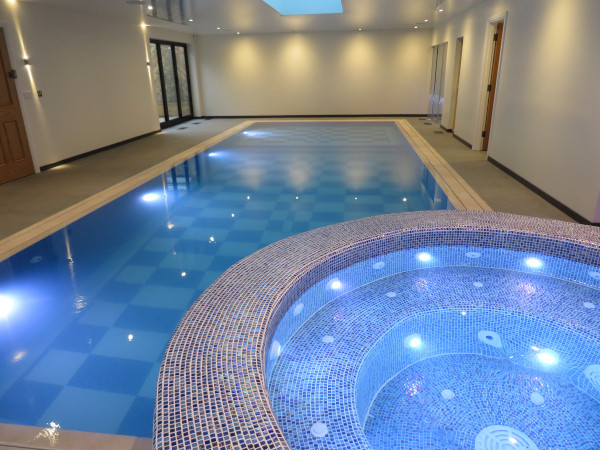Basement Pool Design
All basement pools involve complex design issues that can only really be properly assessed and dealt with by a structural engineer that is experienced in both swimming pools and retaining walls.
Bluepools is often asked to redesign basement pool projects that have been designed by a team involving only the Architect and a structural engineer. This inevitably causes substantial delays and the fee payments for the abhortive designs are wasted. The main problem is their lack of appreciation of how the layout of a basement pool must be dominated by the space required for the Air Handling and Floating Cover Systems and long term access to the cabling and pipework.
Basement Swimming Pool Design Considerations
The swimming pool Air Handling Unit (AHU) will need a fresh air inlet and waste air outlet that will each be at least 0.25m2 in area. These will need to be taken up inside the building above the basement and provided with grilled vents at least 2m apart and preferably on different wall faces. The air delivered from the AHU needs to be taken to a row of diffusers under the glazing that often divides the pool hall from a gym.
A gym space will also needs air-conditioning to make the environmental conditions suitable for hard exercise. The gym AC will need its own heat exchanger and ducting.
The access between the pool hall and the stairs up to the dwelling above needs to have two doors to trap the humidity in the pool hall.
An automatic floating cover is absolutely essential in a basement pool as the capital and operating cost will relate directly to the length of time the pool is in use. This is because when the cover is on the pool costs reduce by a very large percentage.
Hence, space must always be made for the installation of the large roller required for the automatic floating cover that opens and closes at the press of a button.
Ground water conditions outside the basement need to be assessed to identify what level of waterproofing will be needed for the basement walls. ICF is ideal for basement walls because it is inherently waterproof but if leakage does occur then it can be very difficult to locate where the problem is and repair it.
So, it is now standard practice to install a backup internal drainage system that incorporates a submersible pump that starts automatically when water enters the sump in which it is located.
Basement pools all need a bespoke lighting system to make sure that it is a welcoming space. Natural top lighting can also be provided through roof lights but these can be difficult to clean and will need a warm air supply from the AHU to stop condensation.

Are you looking for more technical details on how to build buried and basement pools? Find more details here on our recommendations for the most economical and efficient way to build them:
Buried & Basement Pools